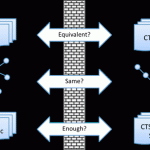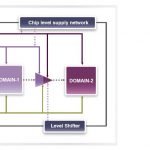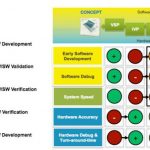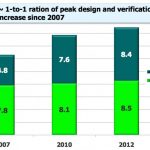This year’s #50DAC will be chock-full of technical content because that is what attracts the masses of semiconductor professionals, like moths to a flame, or like me to a Fry’s Electronics store. Interesting note, I went to high school with Randy Fry. His Dad started the Fry’s supermarket chain which he sold… Read More
Tag: verification
Properly Handing Of Clock Tree Synthesis Specifications
Given today’s design requirements with respect to low power, there is increasing focus on the contribution to total power made by a design’s clock trees. The design decisions made by the front-end team to achieve high performance without wasting power must be conveyed to back-end team. This hand-off must be accurate… Read More
Happy Birthday to Synopsys VIP
I met Mike Sanie around DVCon time and planned to write a blog about the one year anniversary of Synopsys Discovery VIP which was announced during Aart’s keynote at DVCon in 2012. Eric covered it for SemiWiki here. But Synopsys had other stuff they wanted me to blog about and so it is a couple of months late. The 14th month anniversary… Read More
Intelligent tools for complex low power verification
The burgeoning need of high density of electronic content on a single chip, thereby necessitating critical PPA (Power, Performance, Area) optimization, has pushed the technology node below 0.1 micron where static power becomes equally relevant as dynamic power. Moreover, multiple power rails run through the circuit at different… Read More
Virtual Platforms, Acceleration, Emulation, FPGA Prototypes, Chips
At CDNLive today Frank Schirrmeister presented a nice overview of Cadence’s verification capabilities. The problem with verification is that you can’t have everything you want. What you really want is very fast runtimes, very accurate fidelity to the hardware and everything available very early in the design … Read More
Verification the Mentor Way
During DVCon I met with Steve Bailey to get an update on Mentor’s verification. They were also announcing some new capabilities. I also attended Wally Rhines keynote (primarily about verification of course, since this was DVCon; I blogged about that here) and the Mentor lunch (it was pretty much Mentor all day for me) on the… Read More
Mentor Shines at DVCon
Mentor Graphics will be all over DVCon next week (February 25-28) at the DoubleTree hotel in San Jose.
In addition to attending all the panels, tutorials, posters, and the keynote, you can visit Mentor in booth 901 on the exhibit floor.
Here’s the lineup of Mentor-related events:… Read More
Jasper User Group Keynotes
I attended the Jasper User Group this week, at least the keynotes, the first by Kathryn Kranen the CEO of Jasper and the second by Bob Bentley of Intel.
Kathryn went over some history, going back to when the company was started (under the name Tempus Fugit) back in August 2002 with a single product for protocol verification. Now, since… Read More
A Brief History of Aldec
Dr. Stanley Hyduke founded Aldecin 1984 and their first product was delivered in 1985, named SUSIE (Standard Universal Simulator for Improved Engineering), a gate-level, DOS-based simulator. The SUSIE simulator was priced lower than other EDA vendor tools from the big three: Daisy, Mentor and Valid (aka DMV). Aldec maintains… Read More
Aldec-Altera DO-254
As described in DO-254, any inability to verify specific requirements by test on the device itself must be justified, and alternative means must be provided. Certification authorities favor verification by test for formal verification credits because of the simple fact that hardware flies not simulation models. Requirements… Read More










